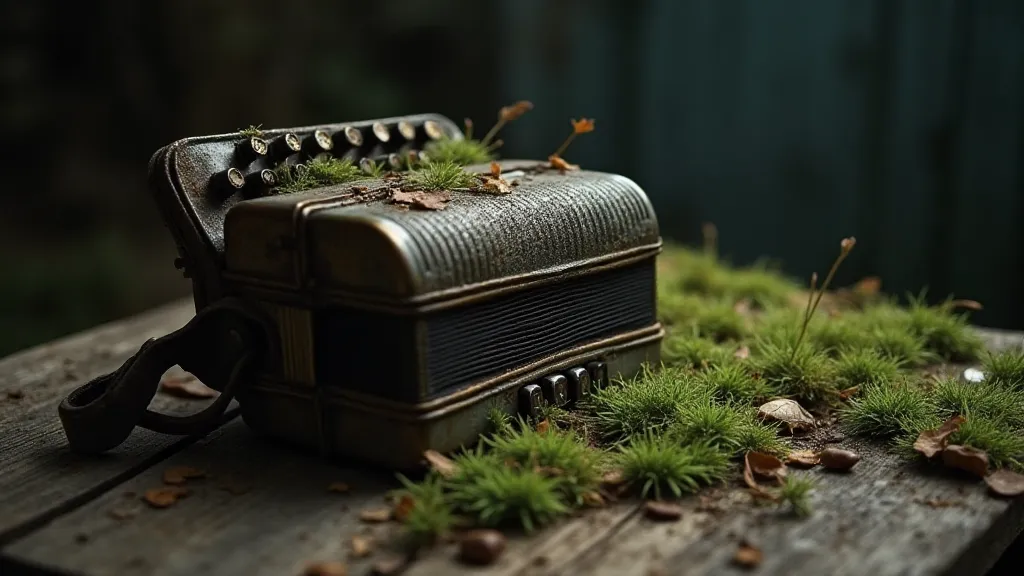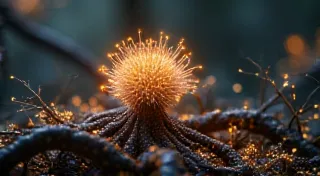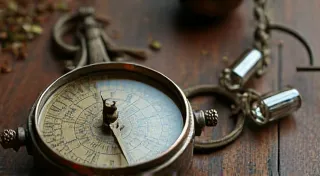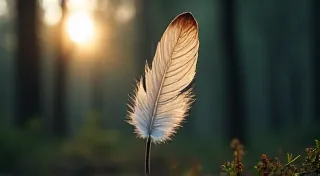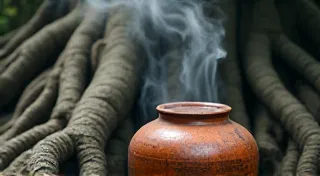The Silent Alchemy: Unveiling the Forgotten Medicinal Lore of Ghost Pipe
There's a particular resonance that antique accordions hold. Not just the mechanical beauty of bellows and keys, precisely engineered to produce harmonious sounds, but a palpable history held within their wooden frames. Each scratch, each faded decal, whispers of dances long past, of celebrations hushed by time, and the hands that coaxed music from their hearts. Similarly, the Ghost Pipe (Monotropa uniflora) possesses a quiet, almost spectral quality that speaks of ancient wisdom, a forgotten language of the forest. It's a plant that doesn't photosynthesize, a being born of symbiosis and mystery, and a potent symbol of the hidden interconnectedness of the natural world.

A Plant Unlike Any Other: Myco-Heterotrophy Explained
Ghost Pipe, often called “corpse plant” or "fairy trumpet," is a most peculiar inhabitant of the forest floor. What truly sets it apart is its myco-heterotrophic nature. Unlike most plants, it doesn’t rely on sunlight to create its food. Instead, it taps into the vast, hidden network of mycorrhizal fungi – fungi that form symbiotic relationships with the roots of trees – effectively stealing nutrients from them. This makes it entirely dependent on these fungal intermediaries, which in turn are linked to the root systems of surrounding trees. It’s a breathtaking illustration of the unseen support systems that underpin the entire forest ecosystem.
Finding Ghost Pipe isn't easy. It prefers shaded, moist woodlands, often deep within mature forests where sunlight struggles to penetrate the canopy. The plant itself lacks chlorophyll, giving it its characteristic ghostly white or pale pink coloration. Its single, nodding flower appears in spring and early summer, and its form, delicate and almost translucent, evokes a sense of ethereal beauty. The flower's fragrance, described by some as sweet and musky, is subtle and easily missed. Its existence alone is a testament to the wonders of evolutionary adaptation and the secrets still held within the natural world.
Ancient Folklore and Traditional Uses
The lore surrounding Ghost Pipe is as fascinating as the plant itself. Indigenous peoples of North America held it in high regard, often incorporating it into traditional healing practices. Records indicate its use by the Cherokee, who employed it as a powerful emetic and purgative. Some tribes believed its essence held properties capable of banishing evil spirits and bringing good fortune. The plant’s unusual appearance and lack of chlorophyll undoubtedly contributed to its mystique and associations with the supernatural.
European herbalists, too, documented uses for Ghost Pipe, albeit with far less frequency than other more common herbs. Early texts, dating back to the 16th and 17th centuries, mention its application as a remedy for dropsy (edema) and as a treatment for various digestive ailments. The rarity of the plant, and the difficulty in obtaining it, likely restricted its use to those with access to specific locations and the expertise to identify and harvest it responsibly. These historical accounts offer a glimpse into a time when herbal remedies were an integral part of healthcare, and when a deeper understanding of the natural world was passed down through generations.
Restoration and Craftsmanship: A Parallel to Herbalism
The meticulousness required to restore an antique accordion mirrors, in some ways, the respect and careful consideration needed when working with rare herbs like Ghost Pipe. Just as a skilled accordion restorer must understand the intricacies of the instrument’s mechanics and the properties of its materials – the wood, the leather, the metal – a responsible herbalist must possess a deep knowledge of the plant's biology, its habitat, and its potential interactions with other substances. A careless hand can irreparably damage a prized instrument; similarly, unsustainable harvesting practices can decimate a fragile plant population.
Think of the maker of an old accordion. Their hands, guided by years of experience, carefully shaped each piece of wood, meticulously tuned each reed, and ensured that the final product would produce a sound of lasting quality. There's a sense of pride and artistry that permeates the entire process. This echoes the profound respect and deep understanding that traditional herbalists held for the plants they used – a recognition that these were living entities, imbued with powerful properties, and deserving of utmost care and reverence. There’s a similar patience required; the patient restoration of an accordion, the slow, careful cultivation of a rare herb – both are acts of connection, of honoring a legacy.
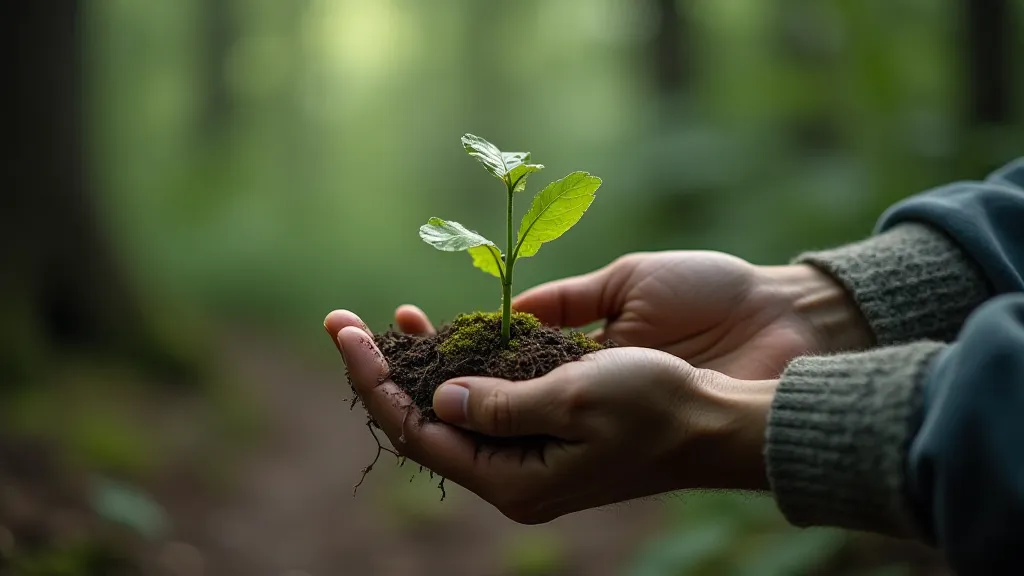
Sustainable Harvesting and Conservation
Given its myco-heterotrophic nature and limited distribution, Ghost Pipe is particularly vulnerable to over-harvesting. Sustainable harvesting practices are absolutely essential for its survival. The most responsible approach is, frankly, to admire it from afar and leave it undisturbed. If, for research or specific, ethically sourced purposes, a small amount of plant material is needed, it should be collected with extreme care, ensuring minimal impact on the surrounding fungal network. The plant should never be completely uprooted, and ideally, only a single flower or a small portion of the stem should be taken.
The ecological interconnectedness of Ghost Pipe extends beyond its direct relationship with the fungi. Its presence is often an indicator of a healthy, old-growth forest ecosystem. Protecting these forests is paramount to ensuring the continued existence of Ghost Pipe and countless other species that depend on them. Supporting conservation efforts and advocating for responsible land management practices are vital steps in safeguarding this remarkable plant and the intricate web of life it represents.
The Silent Lesson
Ghost Pipe is more than just a fascinating plant; it's a potent symbol of the unseen forces that shape our world. It serves as a reminder of the interconnectedness of all living things and the importance of respecting the delicate balance of nature. Like the whispered melodies of an antique accordion, its story speaks of history, artistry, and the enduring power of the natural world. It calls us to listen, to observe, and to appreciate the silent alchemy that unfolds around us every day. And perhaps, in understanding the delicate life of a plant that doesn's need sunlight to thrive, we can glean a deeper understanding of ourselves, and our place within the grand tapestry of life. The reverence for rare and unusual herbs, like Ghost Pipe, isn’t simply about finding a potent remedy; it’s about acknowledging the profound wisdom encoded within the natural world, and committing to its preservation for generations to come.
